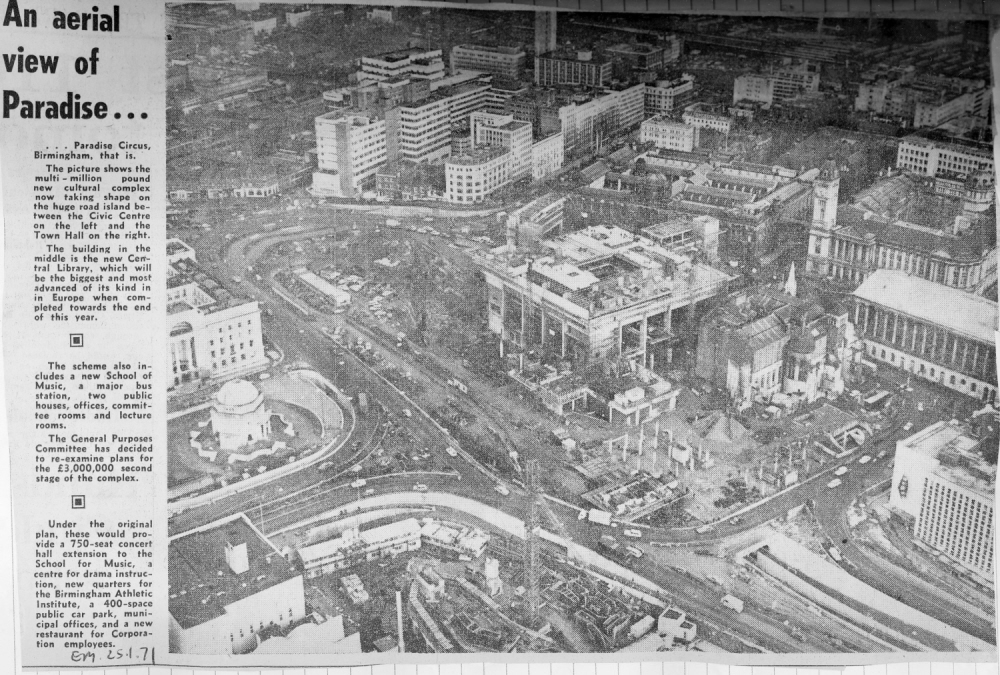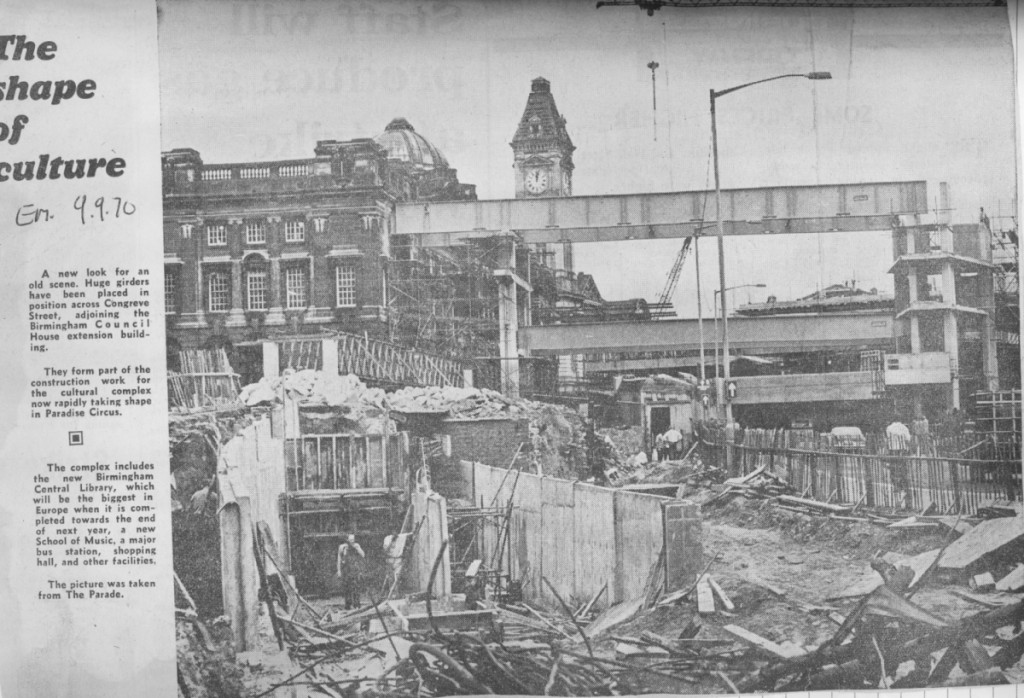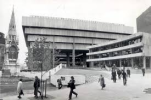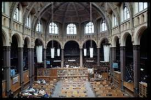cuppateabiscuit
master brummie
I remember only a little of the revamping of Victoria Square and its surrounding area in 1993, definitely not in graphic detail and although I was 14 years old and should remember better, I cannot recall what it looked like before. How it is now, as far as my memory is concerned, is how it's always been. I have become so accustomed to the buildings that define the area that I hadn't even questioned what their function was or what may have stood in their place before them. Birmingham has been a radically changing place for the last 300 years, and that is as true today as it was during previous times. The re-building of the Bullring shopping centre is one of the most recent large re-developments, and at present, a new library is being built on a site beside the REP theatre on Centenary Square, the old library that I have always known, threatened with demolition. The buildings of the 1960's and 70's are not fashionable anymore, so many of them replaced opulent Victorian buildings that most wish the city still had, and it's hard to forgive those 'blunders' I suppose. But those Victorian buildings replaced the simple elegance of many 18th century buildings, and this has been the story of Birmingham, constantly changing its face. Will future generations regret the demolition of buildings such as Central Library, when nostalgia makes them desirable again? And even today, when general consensus seems to be towards the opinion that the Brutalist builds of the 1960's and 70's are without character or charm, we forget that they make up our history, a united bond to a place and time, surely, it is the embracing of a city's history that makes it an interesting place to live and visit. I am excited by the evolution of the city with its new developments including the library, and am looking forward to using this 21st century facility, but I do wonder whether the structure of the old library needs to be dispatched in its turn.
"For once we may congratulate Birmingham on having set down in her streets, from a foreign source, something as course and commonplace in architectural design as any of her native developments. Pots and tea-urns of abnormal dimensions are perched about on ledges and on cornices; the whole of it fussy, pretentious and totally wanting in dignity or breadth of effect" (The Builder, 1890)
This statement was made about the General Post Office (GPO) building which was completed in 1891 on what is now Victoria Square, it was never a particularly liked building, and was one of the buildings threatened with demolition during the 1960's. Under contemporary eyes the plans for Victoria Square (fig. 1) seem soulless and grid like, evoking the feeling of what it might be like to inhabit the inside of a computer. Through the efforts of The Victorian Society though, this, and many other Victorian buildings were saved during this post war re-invention. It is difficult to comprehend how it could even be contemplated for buildings such as this one to be torn down, but Birmingham’s history is one of marching ‘forward’, true to its motto, and to do this it cannot be sentimental about its past. It is understandable that Central Library does not excite sentimentality in a great number of the city’s inhabitants in its present state, but perhaps the fact that it arouses discussion makes it viable, at least viable for more deliberation. The old library cannot remain in its position with its current neglect, but pulling it down is possibly not the only option, it cannot be a library, but what else can it be? And what alterations could make it desirable for a Birmingham applying for 2013’s award of ‘City of Culture’? If there are no other solutions for the buildings future, then those who like the library will have to see it go, its memory, like so many buildings of the city preserved in photographs alone, but it would be a shame to let it go without looking for alternative solutions.
"For once we may congratulate Birmingham on having set down in her streets, from a foreign source, something as course and commonplace in architectural design as any of her native developments. Pots and tea-urns of abnormal dimensions are perched about on ledges and on cornices; the whole of it fussy, pretentious and totally wanting in dignity or breadth of effect" (The Builder, 1890)
This statement was made about the General Post Office (GPO) building which was completed in 1891 on what is now Victoria Square, it was never a particularly liked building, and was one of the buildings threatened with demolition during the 1960's. Under contemporary eyes the plans for Victoria Square (fig. 1) seem soulless and grid like, evoking the feeling of what it might be like to inhabit the inside of a computer. Through the efforts of The Victorian Society though, this, and many other Victorian buildings were saved during this post war re-invention. It is difficult to comprehend how it could even be contemplated for buildings such as this one to be torn down, but Birmingham’s history is one of marching ‘forward’, true to its motto, and to do this it cannot be sentimental about its past. It is understandable that Central Library does not excite sentimentality in a great number of the city’s inhabitants in its present state, but perhaps the fact that it arouses discussion makes it viable, at least viable for more deliberation. The old library cannot remain in its position with its current neglect, but pulling it down is possibly not the only option, it cannot be a library, but what else can it be? And what alterations could make it desirable for a Birmingham applying for 2013’s award of ‘City of Culture’? If there are no other solutions for the buildings future, then those who like the library will have to see it go, its memory, like so many buildings of the city preserved in photographs alone, but it would be a shame to let it go without looking for alternative solutions.







